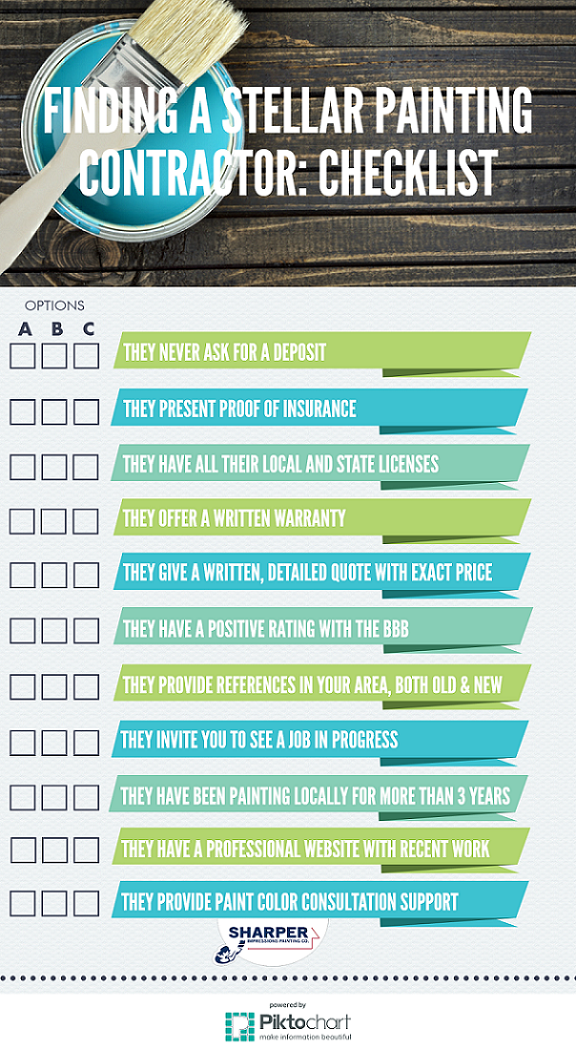Understand How Seasonal Conditions Affect The Success Of Industrial Exterior Paint And Find Out The Excellent Durations To Assure Lasting Outcomes For Your Project
Understand How Seasonal Conditions Affect The Success Of Industrial Exterior Paint And Find Out The Excellent Durations To Assure Lasting Outcomes For Your Project
Blog Article
Writer-Ford Browne
When you're intending a business outside painting task, seasonal variables can make or break your outcomes. You'll intend to consider how temperature and humidity effect paint application and drying out times. Selecting the right season can ensure your paint sticks effectively and lasts much longer. Yet which periods are absolutely the most effective for this type of work? Allow's explore the key elements that can affect your task's success.
The Influence of Temperature on Paint Application
When you're planning an industrial outside painting project, the temperature can dramatically affect how well the paint sticks and dries.
Ideally, you wish to paint when temperatures range between 50 ° F and 85 ° F. If it's as well chilly, the paint might not heal correctly, resulting in issues like peeling off or cracking.
On the other hand, if it's also hot, the paint can dry too swiftly, avoiding appropriate bond and leading to an uneven finish.
You ought to additionally consider the moment of day; morning or late afternoon supplies cooler temperatures, which can be a lot more desirable.
Always check the maker's suggestions for the certain paint you're making use of, as they often provide advice on the perfect temperature variety for optimum outcomes.
Moisture and Its Result on Drying Times
Temperature level isn't the only ecological factor that affects your industrial outside paint project; moisture plays a significant role also. High humidity levels can reduce drying times substantially, influencing the general quality of your paint work.
When the air is saturated with dampness, the paint takes longer to treat, which can bring about issues like inadequate bond and a greater risk of mildew development. If you're repainting on an especially damp day, be gotten ready for extensive delay times between coats.
It's vital to keep an eye on local weather and plan appropriately. Preferably, go for visit the following web page in between 40% and 70% for ideal drying.
Maintaining these factors in mind ensures your project stays on track and delivers a long lasting surface.
Best Seasons for Commercial Outside Paint Projects
What's the best time of year for your commercial outside painting jobs?
Springtime and very early fall are usually your best choices. Throughout these periods, temperature levels are mild, and moisture levels are frequently reduced, creating excellent conditions for paint application and drying.
Stay clear of summer's intense heat, which can cause paint to completely dry as well promptly, resulting in inadequate adhesion and surface. In a similar way, winter's chilly temperatures can impede appropriate drying out and treating, risking the longevity of your paint work.
Go for days with temperature levels between 50 ° F and 85 ° F for ideal outcomes. Bear in mind to examine the regional weather forecast for rain, as wet conditions can ruin your project.
https://www.adn.com/business/article/ramseys-interior-painting-makes-noticeable-home-improvement/2015/07/19/ around these elements guarantees your painting job runs efficiently and lasts longer.
Final thought
To conclude, planning your commercial outside paint projects around seasonal considerations can make a substantial distinction in the outcome. By organizing work throughout the optimal temperature levels and humidity levels, you'll ensure much better bond and drying times. Remember to watch on local weather report and select the correct time of year-- springtime and very early autumn are your best options. Taking these steps will assist you attain a durable and professional surface that lasts.
